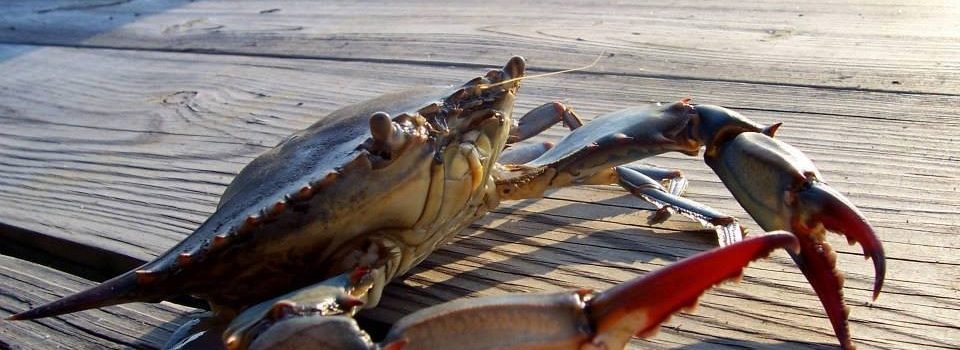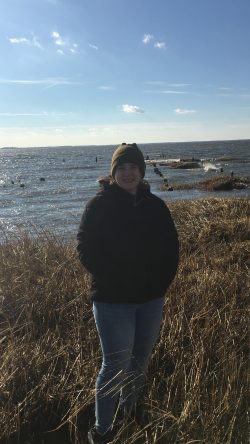
Blue Crabs and Blue Waters: A Reason to Protect our Estuaries
National Estuaries Week events improve habitat, education, and action
By Mollie Russell

The Delaware Estuary has been an integral part of my life since birth. In fact, I have the privilege of being able to see the Delaware River from my house in Wilmington.
The waters that ebb and flow through the estuary provide my city with drinking water, create jobs, and, most importantly (to me, at least), sustain my father’s biggest passion: crabbing.
Although I have since become a vegetarian, crab feasts were a major part of my childhood.
Getting up at 5 am, quickly getting dressed, lathering on sunscreen, and jumping in the car to drive to the docks for a day on the boat is a memory I will never forget. When I think back to these times with trotlines and traps floating around us, I still remember the sun on my back, the wind rushing through my hair, and the swaying of the boat on the open water.
None of these memories would be possible without a healthy Delaware Estuary.
The blue crab relies on healthy estuaries up and down the Atlantic coast. Males prefer the fresher water toward the rivers while females stay further toward the inlets of the ocean. They mate in the low-salinity, shallow waters along the shores.
Not only do blue crabs rely on estuarine habitats, though; these estuaries also rely on the blue crab. The crab is an omnivorous creature with a diet consisting of snails, bivalves, recently deceased fish, plants, and, at times, juveniles of their own species. They provide much needed population control within estuaries and food for many species, including the great blue heron, striped bass, and the endangered Kemp’s ridley sea turtle.
If estuaries are threatened or disrupted in any way, so too will be the blue crab, a keystone species of places like the Delaware and Chesapeake Bays. When the blue crab is affected, the overall ecosystem feels it and a fatalistic cycle begins.
Blue crabs are not only threatened by predation, but also by habitat loss and harvest pressure – both human-induced. The most important type of habitat for the blue crab is the underwater grass bed, where juveniles, molting adults, and feeding crabs gather to hide from predators.
A decline in grass bed health can be traced to pollution, particularly agricultural and industrial runoff; dredging, and coastal infrastructure development. Ocean acidification and warming water temperatures also harm these communities and harm blue crabs in turn.
As for harvest pressure, crabs are threatened because of recruitment overfishing, when too many adult crabs are captured, leading to a decrease in the next juvenile population.

Fortunately, there are many organizations championing the health of our estuaries, aiding in the restoration of seagrass ecosystems and allowing for blue crab populations to thrive. This week is an important week for the organizations that protect our waters: National Estuaries Week.
From September 19th through the 26th, RAE and estuary programs nationwide are celebrating. The event aims to bring awareness to our nation’s estuaries and coasts, encourage active engagement through volunteering and education, and communicate the value of our estuaries to lawmakers.
Although this year’s observance may be a bit different to years prior due to Covid-19, there are still exciting events taking place!
The National Estuarine Research Reserves kicked off the week with a photo contest. Rookery Bay Research Reserve has virtual activities ranging from a virtual boat trawl to estuary trivia. Galveston Bay Foundation is hosting their signature community-based restoration project, Marsh Mania, on the 26th to close out the week.
I’d be remiss not to also mention the Books at Breakfast and Bingo on the Boardwalk hosted by the Delaware National Estuarine Research Reserve.
If you want to share your estuary experiences, or just want to follow the events on social media, use the tags #EstuariesWeek and #EstuaryHeroes! Together, we will protect our estuaries and species like the blue crab and, hopefully, my father will be able to enjoy crabbing for many more years to come.
Mollie is currently a fall intern with Restore America’s Estuaries. She is studying Environmental Science and Sustainability at American University.
